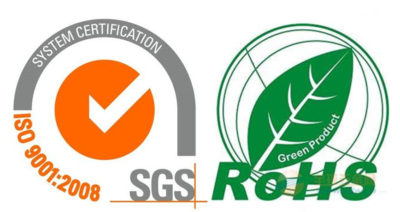Regenerative desiccant dryers use a porous desiccant that adsorbs the moisture by collecting it in its myriad pores.
Activated alumina, silica gel, molecular sieve are porous desiccant used for regenerative desiccant dryers
Regenerative desiccant dryers use a porous desiccant to adsorb the moisture. The desiccant in the air dryers adsorbs the moisture by collecting it in its myriad pores, allowing large quantities of water to be retained by a relatively small quantity of desiccant. Desiccant types include silica gel, activated alumina, and molecular sieves. In some cases, more than one desiccant type can be used for special drying applications. In most of these cases, a larger particle size (1/4” or more) is used as a buffer zone at the inlet, while a smaller particle size desiccant (1/8” to 1/4”) is used for final drying. Where very low dew points are required, molecular sieve desiccant is added as the final drying agent. The most common dew point rating for these dryers is -40. While this level may be needed for sensitive processes or instrumentation, this level of dryness in not normally needed in general manufacturing unless the pipes are exposed to freezing temperatures.
Normally the desiccant is contained in two separate towers. Compressed air to be dried flows through one tower, while the desiccant in the other is being regenerated . Regeneration is accomplished by reducing the pressure in the tower and passing purge air through the desiccant bed. The purge air may also be heated, either within the dryer or externally, to reduce the amount of purge air required. Heated purge air may also be supplied by a blower. Desiccant dryers all have a built-in regeneration cycle, which can be based upon time, dew point, bed moisture load or a combination of these.
Dewpoint controls of desiccant air dryers:
One way to ensure the purge flow stays at near 15 to 20 % of the actual dryer flow is to use dew point or loading controls on the dryer. These controls adjust the purge time of the dryer to ensure that all the desiccant is saturated before the flow of purge starts to regenerate the desiccant. This method of control sometimes has its problems as the typical designs allow the desiccant to both sides to saturate fully before the flow of purge is turned on. Since both sides need regeneration there are sometimes a cluster of multiple purge cycles that can cause additional air demand. This has prompted at least one manufacturer to put moisture probes part way up the towers to detect then the moisture front reaches a certain level, thereby leaving some active desiccant remaining to assist in the regeneration. Others simply use a watchdog timer that initiates a purge cycle every so many minutes no matter what. This type of system has limited turn down for light loads.
Of course the dew point control sensor is only as good as its calibration. At one paper plant the compressed air system operators checked and recorded the dew point value of their blower purge dryer every 2 hours. No matter what, the reading was a constant -120 F, never changing. An auditor pointed out that there was water was pouring out of the dryer after-filter, yet the control said -120 F. The sensor had become flooded and failed to the low reading, a test of the calibration would have prevented expensive downstream contamination of instrumentation.
If you have any questions on the application of activated alumina in desiccant air dryers, welcome you find us. Our website : Http://xradsorbent.com and Http://www.aluminaadsorbents.com.
Welcome your enquiry. Thanks!

